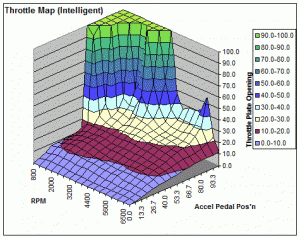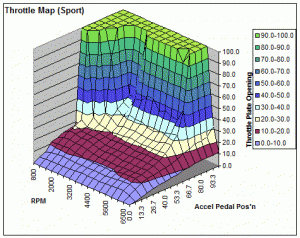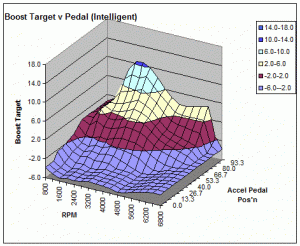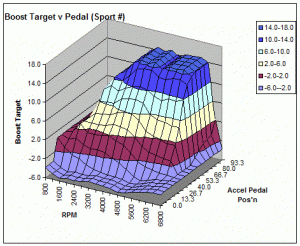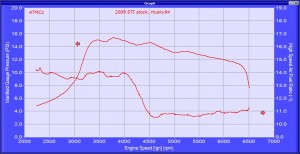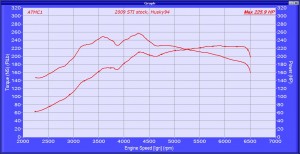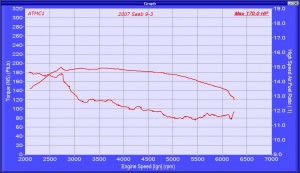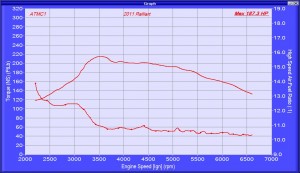When the GR STi was introduced in 2008, Subaru added something called the SI Drive, where a dial was used to select from three different throttle settings. From the charts below, it is easy to see why the Intelligent mode felt very sluggish; it restricts throttle opening to a very low value. If you floor the accelerator pedal it will, after a delay, switch to Sport mode where the throttle is allowed to open fully.
Along with changing the throttle profile with each mode of the SI Drive, the ECU will also change the boost targets.
You can see in the Sport and Sport# modes, the boost target at 100% throttle is wavy. This ripple in the boost target is reflected in the physical measurements of manifold pressure.
It can also be seen in the graph that the Air-Fuel ratio (AFR) is ~14:1 up to ~4000 rpm and then drop rapidly down to 10.x:1. The lean AFR at full boost would often cause the engine to knock and the ECU would then need to reduce ignition advance to stop the detonation. As ignition advance is reduced, torque output from the engine is also reduced. This combination of rapid AFR change and ignition advance fluctuation leads to inconsistent power output through the rev range.
Not really sure of the motivation for forcing the lean AFR below 4000rpm is. I have heard that it has to do with reducing emissions but there are other turbo charged cars that do not exhibit this behavior. Examples are the 2007 Saab 93 and the 2011 Mitsubishi Lancer Ralliart. As soon as it hits full boost, AFR transitions to more reasonable values.

